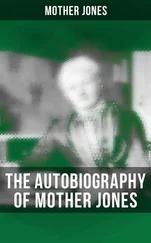Population growth meant that the new habits soon spread. Waves of technical change radiated from each centre of origin. In Europe, decorated beakers appear in archaeological digs, and in the Far East implements of rice cultivation spread for thousands of miles from their Chinese homeland.
From its origin in the Middle East about ten thousand years ago, agriculture reached Greece about five thousand BC and took more than two millennia to cross Europe. Its expansion was not regular. The frontier was rather like that of the nineteenth-century Wild West. The colonists settled the best areas first and left the less valuable lands to their original inhabitants. In north and east Europe, hunter-gatherers managed to stall the wave of farmers from the Danube basin for a thousand years. Their northward spread was further slowed by a worsening climate which made it hard to grow crops. The new technology did not reach Britain until about five thousand years ago. Elsewhere, it was delayed for even longer and in southern Finland the novel economy did not begin until after the time of Christ.
Much of the resistance to the farming way of life was due to the success of the hunters of the 'Forest Neolithic'. Nine thousand years ago northern Europe had a population of affluent foragers. They lived in large camps, built traps for their prey, and stored great caches of food. Around the Baltic, they built stilt villages in ice-dammed lakes. In some places, hunters specialised on seals and in others on deer. Those who gathered ate thirty or more different plants — grasses, acorns, sorrel and dandelions and, in marshy places, water-chestnuts. Millions of broken water-chestnut shells have been found, together with the wooden mallets used to smash them. The single crop was flax, used for rope rather than food.
Wherever farming arrived, the local hunter-gatherers suffered, sooner or later, a process of gentrification as a wave of economically advanced people moved in on them. It is easy to imagine the complaints of the natives as the newcomers with their new-fangled ways and high technology disrupted their rural idyll. Life in southern England five thousand years ago had quite a lot in common with that depicted in the BBC radio series The Archers today.
The farmers may have overwhelmed the hunters but there was a long period of coexistence. Farmers traded grain for meat and furs. In some places, the transition from the old to the new economy took a thousand years, with a slow decline in the number of bones of wild pigs and deer and of natural grasses (as shown by the impressions of their seeds in fragments of pottery) in favour of cattle and grains. The decline in climate at last put paid to hunting. Oysters and seals disappeared from the Baltic and the northern hunters at last moved into the modem world.
Economic historians have two views of the origin of technology. One theory has it that knowledge itself moves, rather than the people who know: new methods are passed from group to group. The other claims that cultural advance comes from displacement and the conquest of one people by another. The sophisticated bring their knowledge with them and replace their predecessors. Bones, pots and seeds hint at the nature of the European Community ten thousand years ago; but the genes say more. Genetic patterns in today's Europeans show that both migration and diffusion were involved in the replacement of hunting with agriculture. The farmers did move in on the hunters, but, just as in The Archers, social barriers did not stop sex across the dass divide.
To reconstruct the history of Europe from genes is difficult, because it is one of the more tedious parts of the world, with rather little change from place to place. A genetic map based on dozens of genes from hundreds of places does hint at a general trend from south-east to north-west, from Greece to Ireland. This map looks rather like that of the wave of advance of farming, based on the spread of agricultural implements. Farmers moved on at about a kilometre per year by founding new farms at the edge of their expanding population. They interbred with the local hunters and, because they were much more numerous, absorbed their genes. This process began in the Balkans and was completed thousands of years later on the western fringes of Europe. By the time the farmers reached the far north and west their genes had been much diluted with those of the aboriginal Europeans. As a result, the British contain more hunting DNA than do, say, the Greeks, who descend from a less adulterated wave of immigrants who had rolled over the earlier economy and absorbed its genes. The biological heritage of hunters and farmers means that today's Britons are more related to the Portuguese than to the Serbs. The latter live about the same distance away but are closer to the Middle Eastern source of agriculture.
The history of European women — as defined by mitochondria! genes — is not quite so clear. They are divided into half a dozen or so major clusters and a few minor groups^ most of whom split apart at some time during the end of the Stone Age, perhaps as the ice retreated across the continent. Although the frequency of each varies from place to place, the geography of mitochondria is harder to fir into a historical narrative than is that of genes that pass through both sexes. There is a hint of an east-west trend along the Mediterranean coast, which might reflect the movement of farmers' wives, but no sign of this further north.
The genetic map of Europe has a few anomalies. The Basques do not fit into the general pattern. They have a number of unique features, with the highest frequency of the Rhesus negative blood group gene in the world. Excavations show that the locals resisted the new technology for thousands of years. They still differ from all other Europeans and may be closer to our hunting ancestors than anyone else (although their mitochondria are not distinct from those of their neighbours). The Lapps, too, are distinct and descend from a different group of hunters, whose society they still in part retain. Sardinians are also rather different from the rest of Europe and have affinities with the Basques. The remoteness of their island home may have reduced the number of immigrants.
There are also genetic trends away from a Middle-Eastern centre to the north-east towards Siberia, the southeast in the direction of India, and, more ambiguously, south-west into North Africa. Perhaps these too reflect of a wave of farmers on the move away from a population explosion who absorbed the genes of the local inhabitants as they spread. One North African group, the Berbers, now scattered in tribes across Morocco, Algeria, Tunisia, Libya, and Egypt is shown by its mitochondria to be distinct from the Arabic-speaking peoples who surround them. They fit instead into the European family of female lineages and may be the remnants of another branch of the first wave of farmers, who passed south of the Mediterranean.
The new economy left analogous trails in other parts of the world. Rice cultivation started in the Yangtse basin about eight thousand years ago. Within three thousand years there were rice farmers from Vietnam to Thailand and north India. These were the people who developed sea-going canoes and spread into the remote Pacific, where — because rice cannot be grown there — they planted breadfruit, taro and yams. The pollen record from three millennia ago shows that large parts of Java were intensively farmed. Because they were entering an empty land the genes of these Pacific farmers and fishermen are still quite similar to those of their Asian ancestors. In Africa, too, there was a population explosion in places where millet was first grown. The movements of the sickle-cell gene can be traced across the continent in the wake of the first farmers. Those people were in their own way as destructive as had been their hunting ancestors. Great and empty cities in North African deserts were once supported by Holds that have now been overwhelmed. In the same way, in Spain, the Mesta, the great cooperative of the shepherds, turned most of the country into a desert within three hundred years.
Читать дальше
Конец ознакомительного отрывка
Купить книгу












